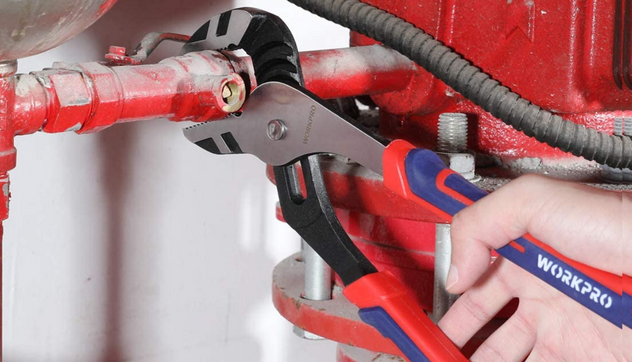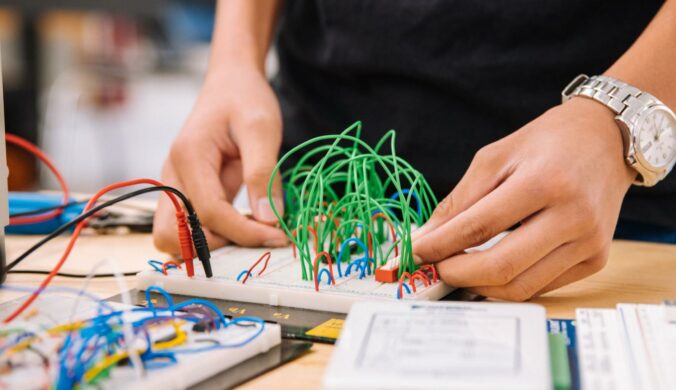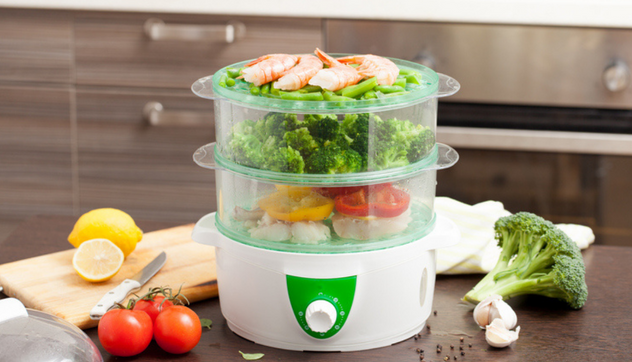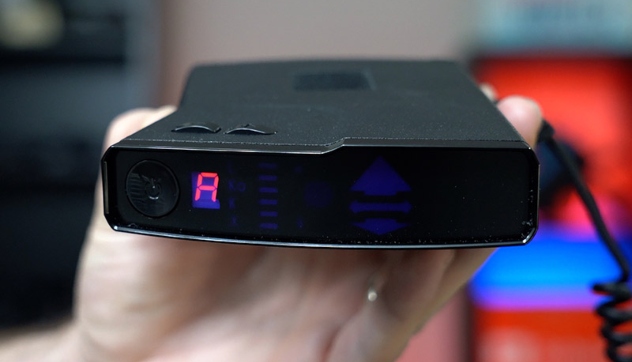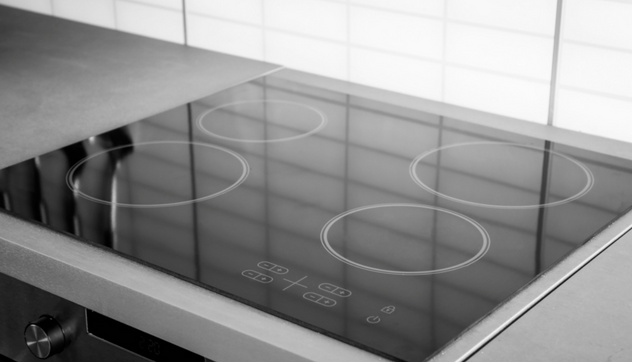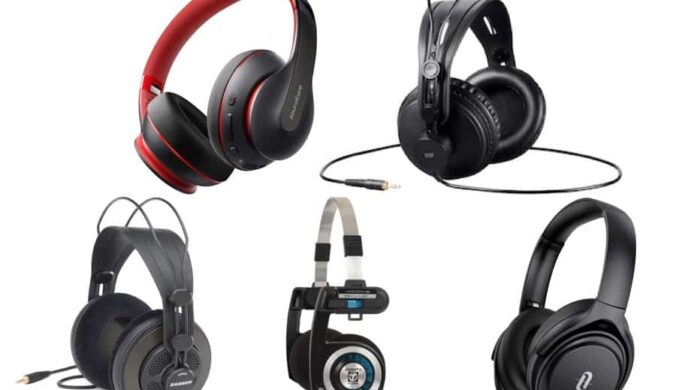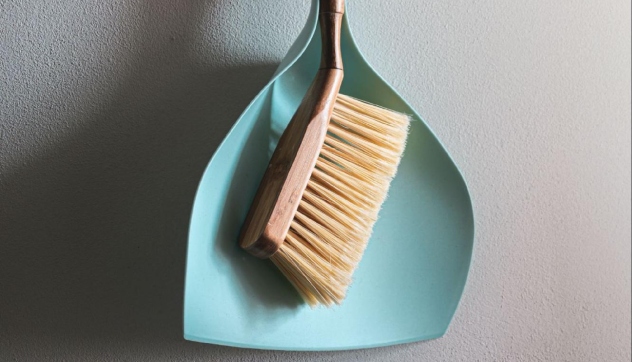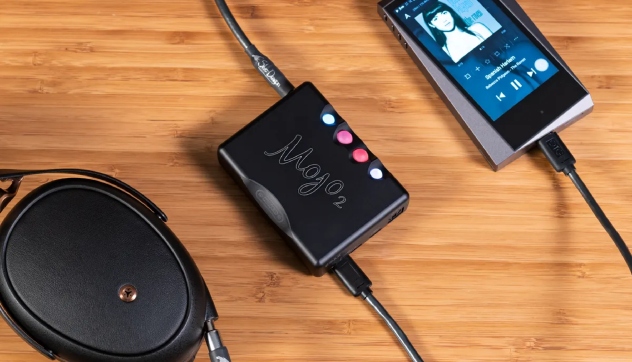The Best Needle-Nose Pliers for 2023
We are reviewing the best needle-nose pliers for grasping and cutting in tight spots.
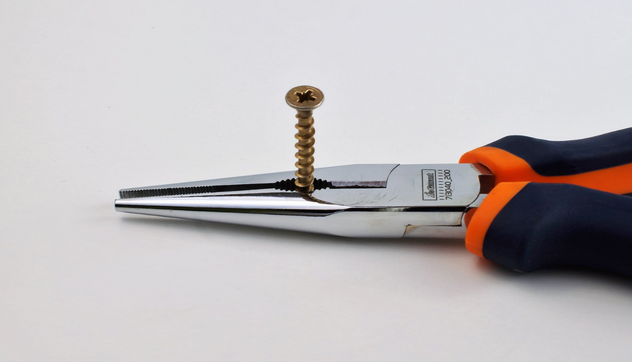
Needle-nose pliers are known to have narrow, tapering jaws with pointed tips. Although they are less effective at tenacious gripping and pulling, their extended design makes them more useful in a number of situations, including reaching hard-to-reach places, catching and holding tiny workpieces, and working with small gauge wire work. Long, pointed needle-nose pliers may fit into cracks in car engines or the backs of electrical outlet boxes because of their long, sharp jaws. They can also assist users in grasping small things at odd angles. When faced with small, precise jobs, these spiky gripping tools are a go-to. If you plan to use your pliers in confined or challenging spaces, this review will give you a proper rundown of what you should look for.
Everything We Recommend

1. Best Product
KNIPEX Tools – Extra Long Needle Nose Pliers
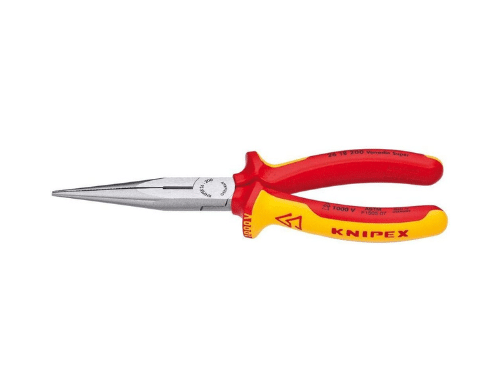
2. Runner Up
KNIPEX Tools – Long Nose Pliers
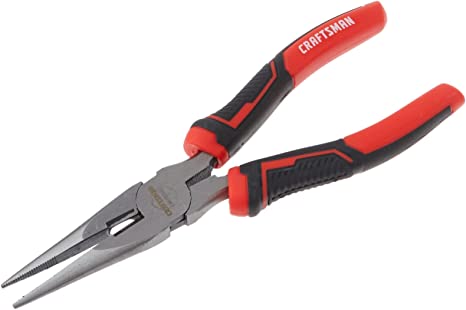
3. Cost Effective
CRAFTSMAN CMHT81645 Long Nose Pliers
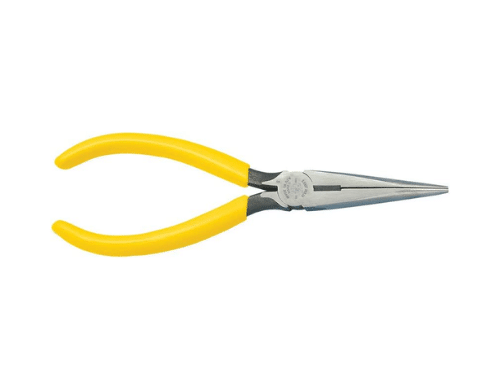
4. Almost Made the Cut
Klein Tools D203-7 Needle Nose Pliers
1. Best Product

1. Best Product
KNIPEX Tools – Extra Long Needle Nose Pliers
These pliers have sufficient length to protect your knuckles when working in hard-to-reach spaces.
Specifications
- Weight
- 0.54 pounds
- Dimensions
- 11.1 x 2.1 x 0.55 inches
- Material
- Alloy Steel
- Handle Material
- Plastic
Pros
Slim, Extra-Long Design
Non-Slip Handles
Multiple Gripping Areas
45° Angled Jaw Available
Cons
Limited Functionality
Who It’s For
This plier is perfect for anyone who wants to use it in confined spaces.
Why It’s Great
The KNIPEX snipe-nose side cutting pliers are a tool primarily used for assembly work in difficult-to-reach places. They are produced using high-quality materials, machined precisely using contemporary equipment, and meticulously hardened through many stages of heat treatment. The precision tips made of vanadium electric steel are elastic and stable when twisted. This allows the manual force to be carefully calibrated—and used forcefully when necessary. The cutting edges are close to the joint, which helps with force transmission.
Potential Flaws
The only minor drawback is that they might be a bit pricey for some, but according to reviews, these are the best needle-nose pliers out there.
Other Features
These pliers are manufactured in Wuppertal-Cronenberg, Germany. Knipex long-nose pliers provide a secure grip in tight spaces. The elastic precision tips on these snipe-nose side cutting pliers are stronger and more flexible, allowing them to withstand twisting and bending without breaking. These pliers have a serrated gripping surface for a secure grip with less slipping, and they have an integrated side cutter for cutting soft, medium, and hard wire. The cutting edges are induction hardened to approximately 61 HRC and will cut medium-hard wire up to 3.2 mm in diameter and hard wire up to 2.2 mm in diameter. With 4.8 out of five-star reviews, the price tag of this plier can be overlooked and purchased because of the value it brings in.
2. Runner Up

2. Runner Up
KNIPEX Tools – Long Nose Pliers
With a 1000V insulation rating, this pair has a design to reduce the risk of electrical accidents.
Specifications
- Weight
- 0.46 pounds
- Dimensions
- 8.00 x 2.00 x 0.98 Inches
- Usage
- Service Field, Cutter
- Cutting Width
- 3.2 mm
Pros
Insulated Comfortable Grip
Chrome Plated Head
Half-round and long Jaws
Cons
Improper Care Can Lead To Rusting
Who It’s For
This plier is perfect for individuals working on electrical installations.
Why It’s Great
KNIPEX's Long Nose Pliers with Cutter include elastic precision tips and half-round, long jaws with serrated gripping surfaces for the ultimate grip. High demands, especially bending stresses, are handled by the thin precision tips. It comes with cutting edges capable of cutting medium hard wire up to 3.2 mm in diameter and hard wire up to 2.2 mm in diameter.
Potential Flaws
The only flaw that few, rather than most, people complain about is the price, but given the immense benefits, this tool provides, getting one is a must-have in your toolbox.
Other Features
In small spaces, a firm grip is guaranteed by these pliers. To access areas that other pliers can't, the half-round tapered jaws are longer and narrower. These elastic precision tips on the snipe nose side cutting pliers are stronger and more flexible, allowing them to bear twisting and bending without breaking. These pliers include a serrated grip surface that makes them more secure and less prone to slippage. They also have an inbuilt side cutter for cutting soft, medium, and hard wire. The cutting edges are induction hardened to roughly 61 HRC and can cut wire with a maximum diameter of 3.2 mm for medium-hard wire and 2.2 mm for hard wire.
3. Cost Effective

3. Cost Effective
CRAFTSMAN CMHT81645 Long Nose Pliers
These pliers are made of forged steel and are durable and hardy.
Specifications
- Weight
- 1.32 pounds
- Dimensions
- 9.37 x 7.4 x 1.85 inches
- Usage
- Cutting
- Material
- Alloy Steel
Pros
Corrosion Resistant Chrome Finish
Comfortable Grips
Extremely Durable
Cons
Limited Jaw Sizes
Who It’s For
These pliers are suitable for anyone because they have a superior long-reach design for working in confined spaces.
Why It’s Great
This high-quality tool from Irwin offers more features than other pliers that cost three times as much, including a cutting edge, a comfortable over-molded grip, and serrated jaws. The Irwin needle-nose pliers are six inches long, making them the perfect size for storing in a portable toolbox or carrying in a pocket or tool pouch.
Potential Flaws
The only drawback of this plier is that it may not be as durable as pliers of higher quality.
Other Features
These Irwin pliers are made of alloy steel that has nickel and chromium added to them, making them tough, long-lasting, and unlikely to corrode. The closed jaws are hardly wider than a hair's breadth, making them ideal for grabbing everything but the tiniest wires. The cutters are incredibly exact and are able to cut wires of both heavy and fine gauge (12 and 28 gauge). It has ProTouch grips that provide extra comfort and reduce hand fatigue. Given the cost of these pliers, they are unquestionably worthwhile.
4. Almost Made the Cut

4. Almost Made the Cut
Klein Tools D203-7 Needle Nose Pliers
These pliers are pretty durable, thanks to their induction-hardened cutting knives.
Specifications
- Weight
- 0.23 pounds
- Dimensions
- 9.41 x 3.82 x 0.83 inches
- Usage
- Cutters, Looping, Wrapping
Pros
Plastic-Dipped Handles
Knurled Jaws
Hot Riveted Joint
Cons
Not The Best For Heavy-Duty Tasks
Who It’s For
These pliers are perfect to be used by artisans, jewelry designers, electricians, network engineers, and other tradesmen to bend, re-position, and snip wire.
Why It’s Great
The exceptionally long and slender nose tapers from a slightly larger base to a fine tip, providing outstanding reach into the tightest spaces. The base of the jaws is eased with a slight space (0.3 mm +/- 0.1 mm) to prevent contact that would prevent the tips from closing firmly together, ensuring that the tip can reliably grab the smallest wires or components.
Potential Flaws
Its two noticeable flaws are that it’s not spring-loaded and has no cutter. Also, according to reviews, users noted that tips do not align when closed.
Other Features
The serrations are cut in two passes to create fine, evenly spaced diamond-shaped teeth, and are oriented at 120 degrees to each other — 60 degrees on each side of the jaw centerline. This design creates uniform contact over the jaw surface, unlike single serrations that cut straight across the jaw, enabling you to grasp, pull, and twist uniformly in any direction. The long-arm coil spring is securely tucked between handles to prevent it from getting in the way or being accidentally dislodged while gently helping the opening motion of pliers. The handles are generous in size and have a wide, flat design that gives the fingertips a comfortable place to rest and exercise precise control. Slim vinyl grips provide a nonslip surface and a little comfort without becoming too bulky.
Who This Is For
Long-nose pliers are a common instrument that both professionals and homeowners can use. These pliers may come in handy when precision is needed in confined locations, even if you are not an electrician.
What are needle-nose pliers?
A needle-nose plier is a unique type of plier with a long, pointed nose for working in tight and deep places. They have long, tapered jaws and the appearance of a classic combination plier. Long-nose pliers are another name for needle-nose pliers because of their long jaws.
Are needle-nose pliers different from long-nose pliers?
Long-nose pliers and needle-nose pliers both belong to the same family, but needle-nose pliers have more angular and smaller jaws. In actuality, the only distinctions between needle-noses and long-nose pliers are the pointedness of the jaws and the compact form aspect.
Needle-nose pliers are less powerful than long-nose pliers because of the smaller contour of their jaws. They can bend or break relatively quickly when subjected to a great deal of twisting or bending power. As a result, needle-nose pliers are appropriate for delicate tasks like gripping tiny electronic screws or doing jewelry and artwork. In a nutshell, all pliers with long tapered jaws are types of long-nose pliers. Needle-nose pliers are the version with the narrowest pointed jaws.
Why You Should Trust Us
We’ve been using hand tools for almost 10 years. In addition, we have written on and reviewed hundreds of tools over the years. You can also count on us because needle-nose pliers have long been a staple in our toolbox.
How We Picked
We put each set of needle-nose pliers through tests for comfort, durability, handle material, thickness, and other important factors.
Durability
The material from which the pliers are made has the biggest impact on how long they will last. As you may anticipate, stronger materials cost more in general. The easiest method to guarantee consistent performance when you need it is to choose pliers constructed of high-quality components and materials. To ensure longevity, we strictly selected pliers made of the best materials.
Handle Material
The handles of needle-nose pliers should be made of high-quality, non-slip material to ensure a firm grip while operating. The majority of the pliers we chose for you have rubber handles since this material gives a firm grip and does not allow current to pass through it, protecting you from electric shock.
Comfort
Comfort is crucial, especially if you plan to use the needle-nose pliers frequently. We took care to prioritize comfort when choosing the items on our list. All of the pliers we selected have curved handles that support the hand from the front and the back. When exerting strong forces, this is advantageous. The multi-component sleeves on these pliers make them easier on the hands. The contact area between the handles and the hand is doubled by this ergonomic design. This greatly lowers the chance of developing blisters or pressure points and is quite comfortable for the hand.
Size+Weight
We can conclude that total size doesn’t necessarily indicate quality, but it can add to the convenience. Sizes of needle-nose pliers range from four inches to up to a foot. We concentrated on testing devices in the 8- to 8.5-inch range because it is the size that tradespeople like (smaller pliers are too delicate, and larger ones are specialty tools). The 8-inch variants often feature shorter handles and a significantly narrower nose. This typically results in a longer reach and marginally better mobility in constrained spaces. The chosen use will determine the optimal needle-nose plier’s length. Additionally, the weight of a typical needle-nose plier is about 0.37 pounds.
Thickness
The thickness of the pliers is important to ensure that they don’t bend when in use. The 8.5-inch variants are far more durable; the thicker jaws can hold firmly and won’t bend while being twisted and torqued (for example, if you need to grab a thick wire and twist it out of an outlet box or if you’re trying to loosen a bolt that can only be reached at arm’s length).
Tapered to a Point
Although the general design of each pair of pliers is the same, there are some subtle but important variations. Some are noticeably tapered, whereas others are wider, for instance. These two designs each have their advantages. The choices that are more tapered are preferable for working in confined spaces and gripping small objects. The bigger ones, on the other hand, are typically more powerful and may be slightly more accurate. When the sides are wider, it is simpler to bring the jaws together.
Serration Edges
The side of some pliers has serrated edges. Professionals who intend to cut wires can most often benefit from using these. Since the majority of homeowners do not require this function, it can be disregarded when buying. If it is a must for you, however, look for a pair of pliers that have it. Otherwise, you can obtain something deficient in what you require.
How We Picked
-
Durability
The jaws of needle-nose pliers provide users with improved gripping power, and they are made of forged alloy steel for optimum durability, making them ideal for even the most demanding job sites. It has ergonomic grips with an anti-pinch design that allows for a convenient and simple one-handed control release.
-
Handle Material - Comfort and Grip
Steel needle-nose pliers include easy-to-grasp grip handles that are insulated with a plastic or rubber coating. It is important to hold needle-nose pliers firmly while exerting moderate pressure. They should not be used on live electrical wires since they need to be stronger to cut huge, tough cables.
-
Style/Design
They are made to fit into the smallest, most confined locations that are impossible to access otherwise. For cutting cables and other electrical work, some models incorporate a cutting tool at the tip.
-
Cost-Effectiveness
Prices vary when it comes to hand tools. What a DIYer may consider exorbitant may be "cheap" to a tradesperson. However, most high-quality equipment necessitates a financial investment. There are options for needle-nose pliers that range in price from a few dollars to hundreds of dollars.
Care and Maintenance
How to use needle nose pliers
- Place the needle nose pliers’ open jaw over the spot you want to grip.
- Tighten the grip on the handle until the pliers are locked in place.
- To manipulate or open the wire, use the chain nose or round nose on the opposite hand.
- Close after securing your component.
To remove, release your hold on the flat-nose pliers.
Do I need to sharpen my pliers?
If necessary, they may be easily sharpened. Many individuals advise against purchasing an expensive pair of cutters because they will ultimately get dull, and instead advise buying new cutters altogether. However, you’ll need to purchase a fine hand file if you plan to keep your cutters from becoming blunt after prolonged use.
Cleaning pliers
Cleaning pliers is simple. Fill a bucket halfway with boiling water, add enough dish soap to make a lather, and soak your dirty pliers in the cleaning solution for five minutes. After soaking, use a towel to scrub the pliers until they are completely clean, paying special attention to the rubber handles, which tend to hold grease and stains. Then, using a toothbrush, clean the nooks and crannies around the joint as well as the serrations on the jaw. When you’re finished, rinse the equipment in clean water to remove the soap. Give the instruments a thorough wipe-down with a different towel to dry them. To completely remove the moisture from the joints, you might also slightly heat them. If you don’t thoroughly dry them, the moisture left behind may result in rust, which damages your tools.
Wearing safety glasses
Wear safety glasses, goggles, or a face shield with safety glasses or goggles when there is a risk of flying debris, wires, etc. Make a right-angle cut and never rock the cutting tool from side to side or bend the wire back and forth against the cutting edges.
